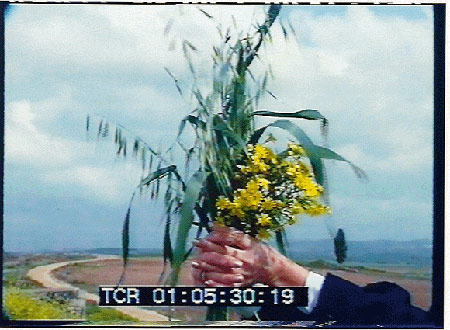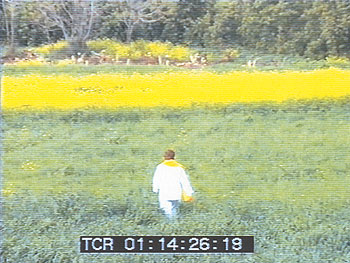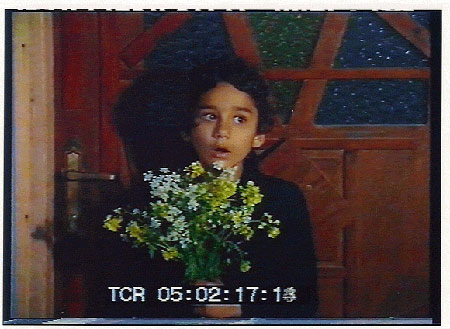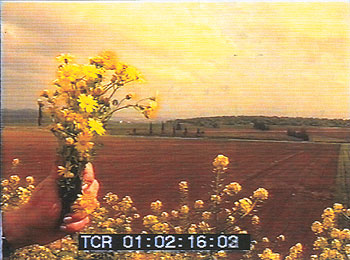.
.
.
.
.
.
.
.
.
.

31.8.2001 <<
6.7.2001 . . .
. .![]() .
. . . .
"Yellow"
.
. . . .
"Yellow"
A different Road Movie
I asked the Participant Artists not to talk politics. They said it
is impossible.
Produce r& Director - Rachel Sukman
Advisor - Ronen Leibman
Camera men - Ronen Leibman, Shlomo Levy. Manes Avny
Editor - Yoram Scheffer
 “Yellow”
is a film about a journey documenting momentary meetings between artists
from different religions and ethnic origins, and the landscapes of the
Middle east around Israel; the territories and the ‘67 border. The
participants in the film discuss food, drink and the visual character of
the land. I conceptualized the film as slow meandering across never ending
landscapes, paths that can be followed eternally. However, the film took
on a character of its own.
“Yellow”
is a film about a journey documenting momentary meetings between artists
from different religions and ethnic origins, and the landscapes of the
Middle east around Israel; the territories and the ‘67 border. The
participants in the film discuss food, drink and the visual character of
the land. I conceptualized the film as slow meandering across never ending
landscapes, paths that can be followed eternally. However, the film took
on a character of its own.
We discovered that the early spring is the season of yellow flowering.
Yellow mountains. Yellow fields. Daisies, chrysanthemum, wild mustard,
sunflowers and mimosa. Even the desert looks somewhat yellow. And in
general, the entire Middle East is yellow with hate, yellow with anger,
and even a bit green with envy. We called the film “Yellow”.
The participants were told that this would be a journey and a meeting, and
there would not be talk of politics or social justice. Nor about who is
right or who was here first. Some of the artists argued the impossibility
of avoiding talk of politics, claiming that when we drove across the ’67
border and we got to Jericho there would be soldiers at the roadblocks, or
deserted Arab villages and new (Israeli) settlements being built in the
territories.
The film, presents a unique dialogue between Israeli and Arab/Palestinian
artists and includes artists from additional nationalities and religions.
The setting of the movie is a trip through the land of Israel/Palestine.
The trip was planned to include the various artists’ favorite landscapes
and their favorite ethnic foods. While the Middle East is constantly on
fire with enmity and hate, we attempted to get away from the conflict,
politics and platforms and find a common ground in the painful definition
of a homeland, as it arises in the context of landscape and food. The film
was produced in the hope-pregnant days of April 1999. 13 artists from the
field of visual arts participated - Palestinians living in Israel, the
West Bank, in the New York Diaspora, an Israeli Druze, a Dutch artist,
Israelis of North African and Eastern European origin, etc. The film
raises the divisive problem of national identity, but at the same time
also raises hopes that some experiences, like food, landscape, land, are
common to all people and can be enjoyed together.
We left on this journey together.
screen of the 50 minutes.
The film was shot in March-April 1999.
The film was produced with the generous support of the Beracha foundation
.
.
.
.
.
.
.
.
